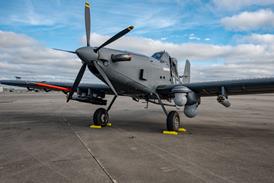Guy Norris/LOS ANGELES
A CEILING LIMIT of 25,000ft (7,500m) temporarily placed on the Boeing 777 by the US Federal Aviation Administration after two incidents of cabin decompression has been lifted after the installation of a modified check valve.
The FAA imposed the limit after the incidents - one near Seattle, Washington, and another near Hawaii - occurred within hours of each other on 2 February.
The Hawaii depressurisation took place at 23,000ft on aircraft WA003 during a loads-survey flight test. The other incident involved WA002 during a rapid descent from 43,000ft.
Investigators determined that both incidents were related to the failure of a check valve in the air-conditioning system (ACS). This usually prevents pressurised cabin air from venting overboard in the event of an ACS pack failure.
In the case of the Seattle incident, only one of the 777's two ACS packs was working during the test, which involved a steep descent. A duct clamp on the ACS "blew off" says Boeing and the check valve went "...beyond the closed position and failed".
A modified valve was approved by Boeing and the FAA on 9 February and testing has resumed at all altitudes. Boeing says: "A production [version of this] valve will be installed on all 777 production aircraft prior to delivery. As expected, the incident has not adversely affected the test programme or delivery of the first 777 to United Airlines on 15 May."
The six 777s now being flown have accumulated a combined total of almost 1,000 flights and nearly 1,950h of flight time.
Source: Flight International























